Using Software-defined Power to Increase Data Center Capacity Cost-effectively

With the change in the computing requirements and capacities, more and more small, medium, as well as large enterprises around the globe are shifting their data center infrastructure from premises to the cloud. Not only businesses, but even the customers are using cloud for storing data in the form of emails, photos, documents, videos, and more.
Why the Cloud Power isn’t Efficient
Being a network of vast data centers, the demand for cloud is growing increasingly day-by-day. With this growing demand, the facilities involved need to be evolved as well. More often than not, the servers and other storage devices can be purchased and installed relatively easily than the power infrastructure. The power infrastructure requires complex, expensive, and time-consuming process to be upgraded.
There have been a lot of efforts taken in the past few years to make cooling and power more efficient. In case of cooling, systems using outdoor air and rain-water are being used in the place of traditional air conditioning systems. With substantial research and efforts taken in reducing the idle power consumption, now, even the largest data centers are able to achieve PUE (Power Usage Effectiveness) of less than 1.2 (where it is 1 in the ideal situation).
Let’s find out how the 2N data centers aren’t effective and how smart power management can come to your rescue.
What is 2N Redundancy of Data Centers and How Does it Affect the Performance?
In a traditional 2N data center, a pair of uninterruptible power supplies (UPSs) is used. Now, each UPS is capable of handling all the power requirement of the data center and yet both the UPSs are up and running all the time with a capacity that never goes beyond 50 percent. The redundant power that is the remaining 50 percent is only used in case of emergencies and maintenance processes.
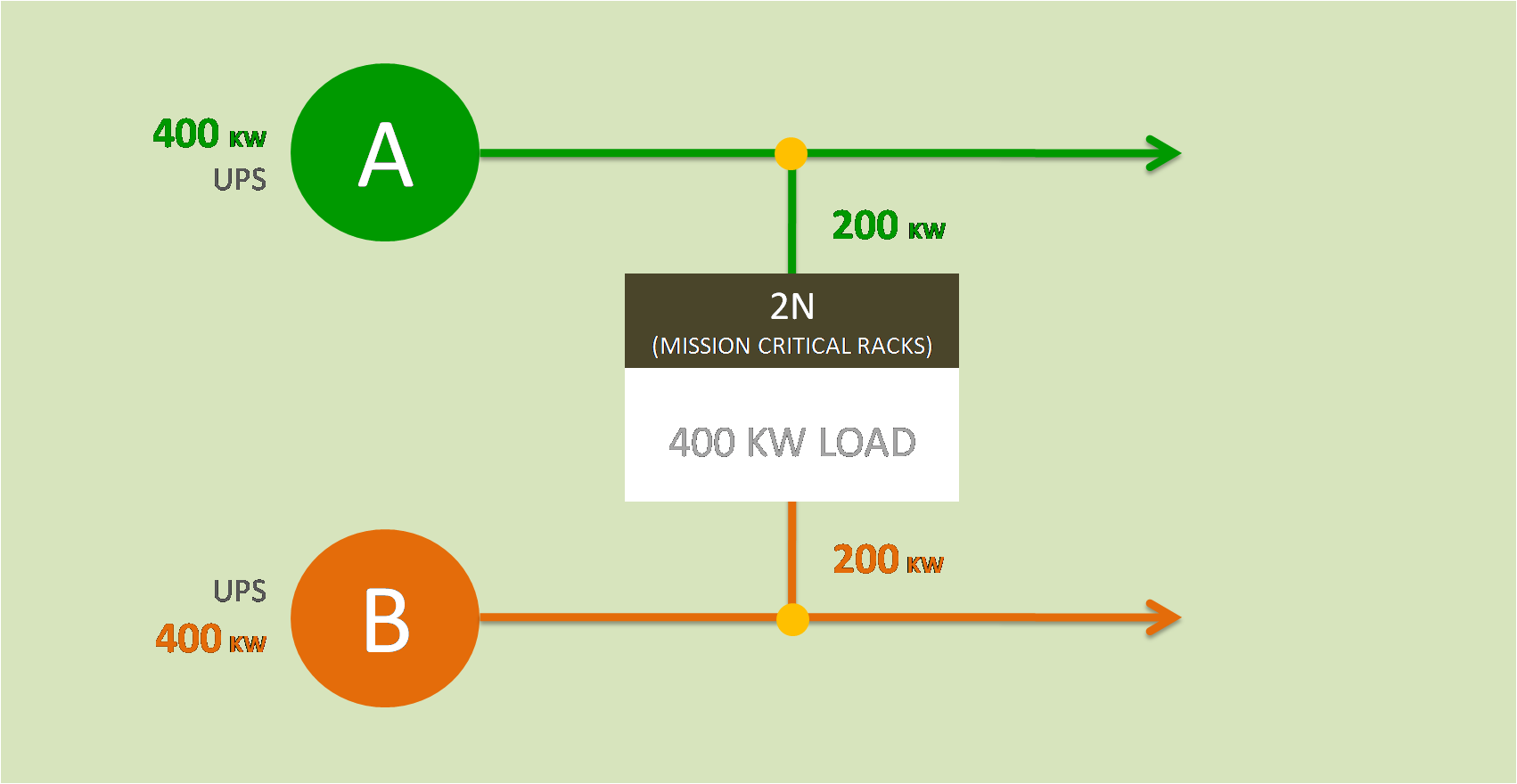
In the 2N Redundancy data centers, all the situations are considered mission-critical. While some environments really are mission-critical 24/7, it is not the case of all environments. And there are some applications that are not even running all the time. The environments like test, development, non-production environments, and other such environments do not generally need 2N power redundancy.
Software-defined Power 101: Everything You Need to Know
Software-defined Power is a powerful integration of intelligent software with specialized power-control hardware. With this technique, power can be tapped and dynamically used across the entire data center. Software-defined power enables smarter power management and helps data center managers and operators to divide workloads without compromising with the mission-critical applications.
Let’s get into the depths of software-defined power, how it works, and what are its benefits:
- How Software-defined Power Works
The software-defined power technology collects and processes the data with the help of predictive analytics and machine learning. These policies containing instructions like what should be done if one of the two UPSs are not available, are sent to the control hardware as frequently as every 10 seconds and the power-control hardware takes required actions to ensure that out of all the racks, the 2N racks (that are critical) remain operational, and the rest are shut-down immediately or after the workloads are closed properly.
- What is Peak Shaving
Peak Shaving is a pioneering technique used in software-defined power devices, wherein the batteries are charged when the workloads are minimal and used when the workloads are maximum. This way, when one of the two UPSs stops working, the other is still never pushed beyond its limits.
- Benefits of Software-defined Power
- For Smarter Power Management
It helps you keep tabs on the power in your data center. And when you can keep tabs, you can manage it well. With techniques like peak-shaving and dynamic redundancy, it enables data center operators to have an overview of power requirements for the data center, design specific policies, and distribute power as per requirement to each control unit, thus, enabling smarter power management.
- Enables Dynamic Redundancy
Dynamic redundancy smartly handles the issue of the 2N redundancy data centers that considered all workloads as critical. With dynamic redundancy, the critical and non-critical workloads are differentiated and while both the UPSs in the rack are working, the excess power is diverted towards the non-critical workloads. And when one of the UPSs stops working, the power-control hardware considers the latest policy update received from the power-control software and ensures that the required 2N workload is still supplied to the mission-critical racks.
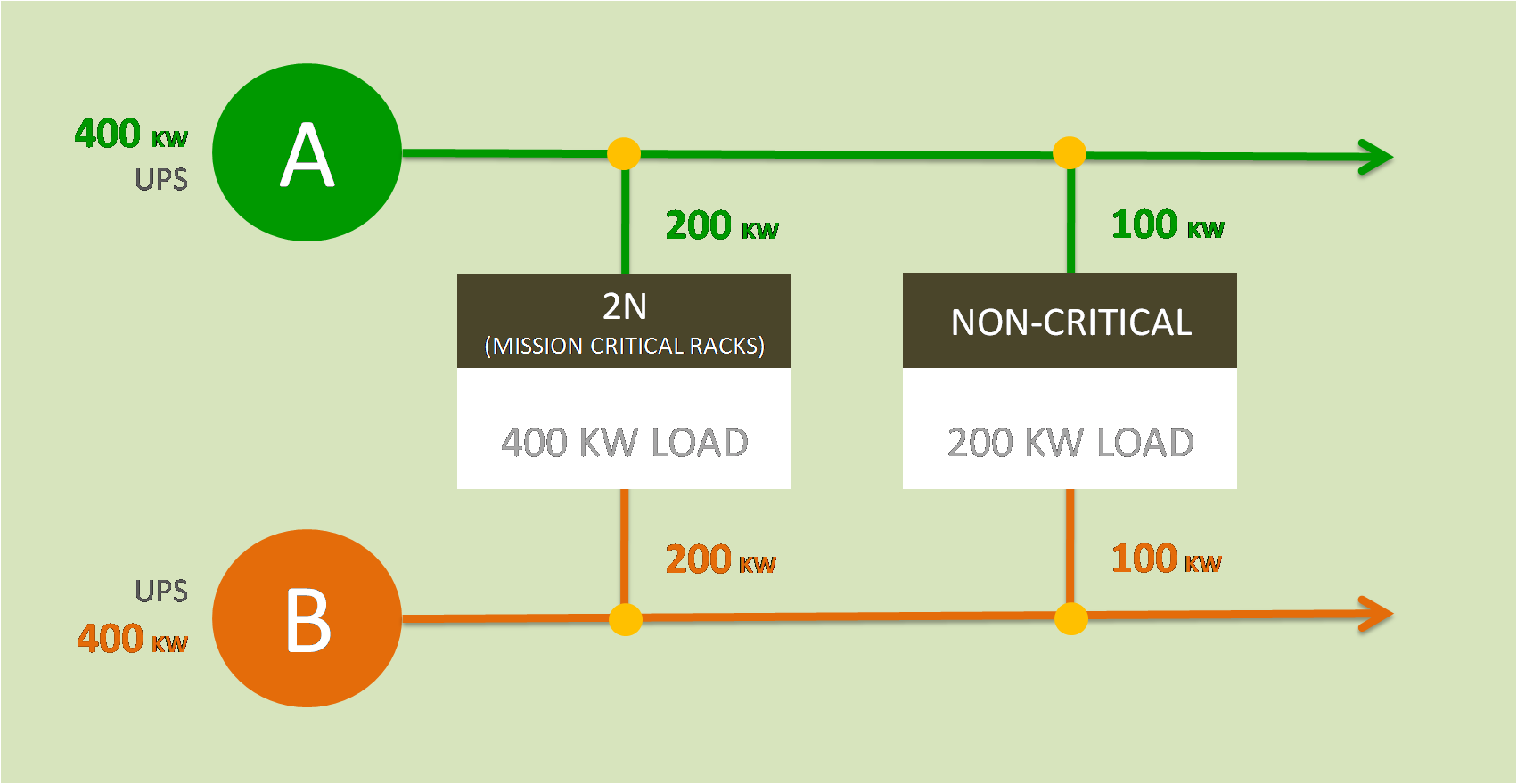
- Maximizing Peak Load
Now, if you consider the same 2N data center, but operated with the help of software-defined power, you can add more racks to this data center that can run in a non-critical environment. So, if we use two 400 kW UPSs, in the traditional data center, both will be used only for the critical racks that need 400 kW power (peak load = 400kW). Here, only 200 kW of both the UPSs is used. But, with dynamic redundancy, an additional 100 kW of both the UPSs will be out into use for the other racks (peak load = 600kW). Next up, if one of the UPSs isn’t available, the Software-defined power system’s smart power control triggers the hardware power control to take necessary actions like shutting the power supply to the non-critical racks and supplying the entire 400 kW of the working UPS to the critical racks.
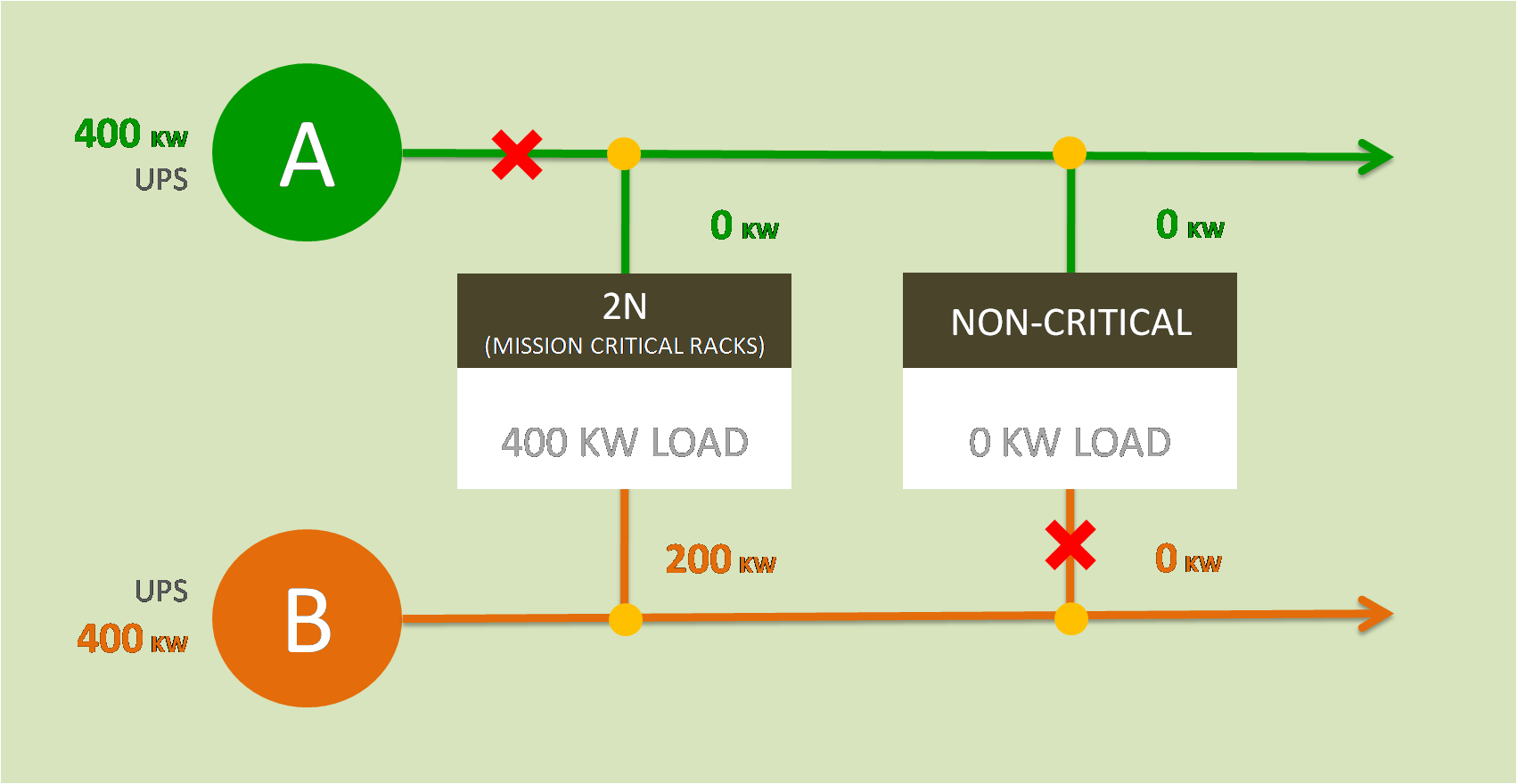
Software-defined power is definitely a relief for data center operators. It’s a great way to add capacity, use resources efficiently and in their full-potential, while handling downtimes better. In addition to upgrading your power-infrastructure, the smart-power control also provides flexibility and drives revenue for your business.
Need to know more about software-defined power and how it helps you improve your data center’s capacity? Connect with the experts at Prasa Infocom and Power Solutions.
We are a dedicated team of full-fledged data center consultants, engineers, managers, and design experts that offer data center and other mission-critical infrastructure solutions, services, and products for all your business needs.

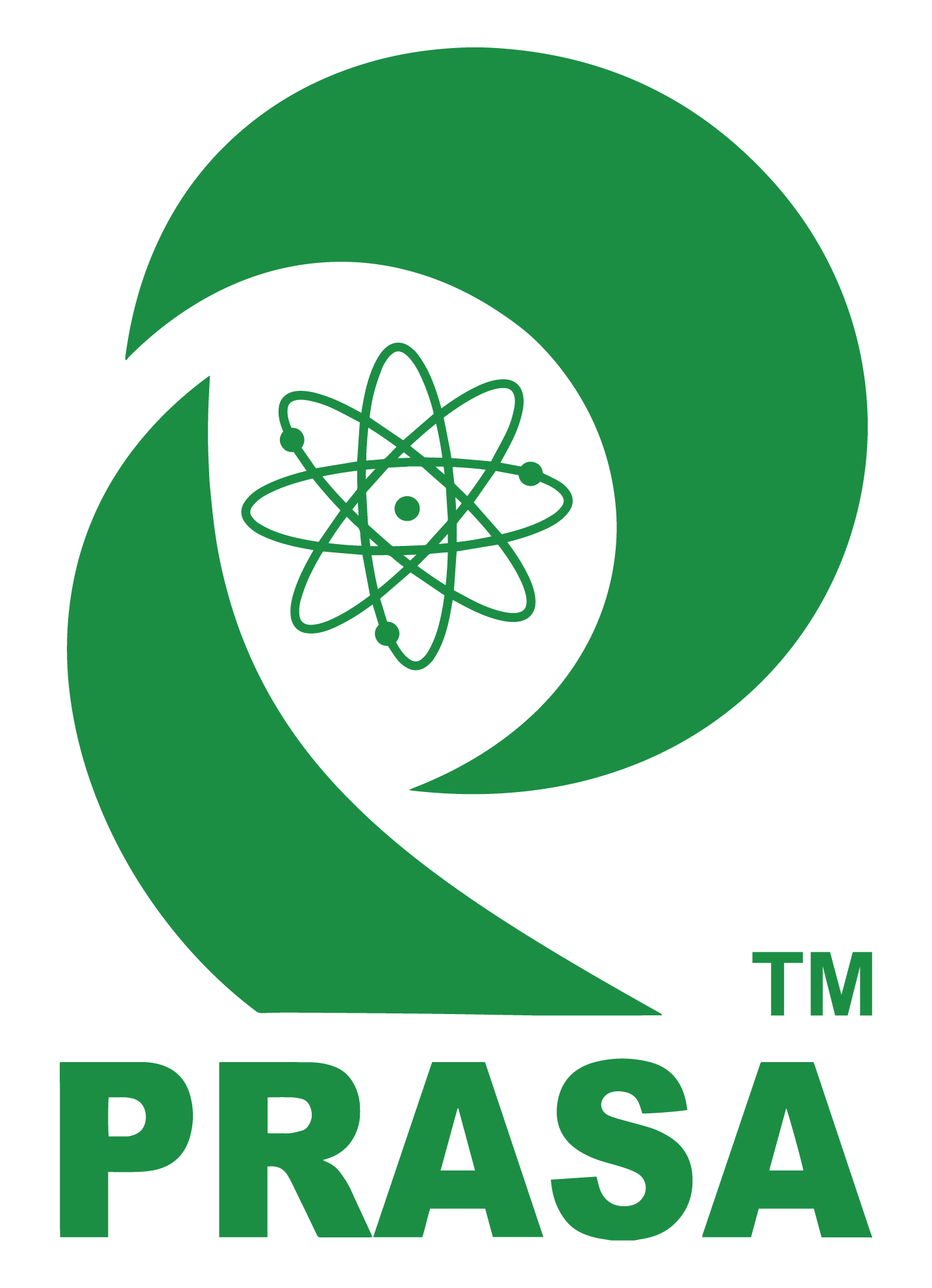
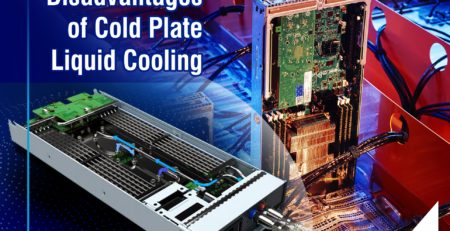




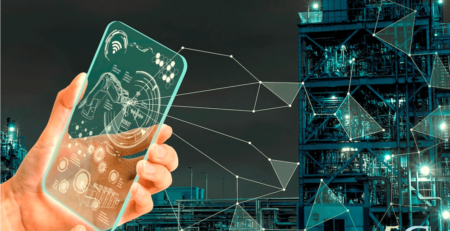

Leave a Reply